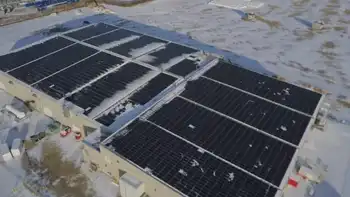Ontario releases long-term energy plan
By Ontario Ministry of Energy
NFPA 70e Training - Arc Flash
Our customized live online or in‑person group training can be delivered to your staff at your location.

- Live Online
- 6 hours Instructor-led
- Group Training Available
The 2013 Long-Term Energy Plan LTEP balances five principles that will guide future decisions: cost-effectiveness, reliability, clean energy, community engagement, and an emphasis on conservation and demand management before building new generation.
Compared to the previous plan, Achieving Balance is expected to reduce projected cost increases by $16 billion in the near term 2013-2017, and $70 billion to 2030. These cost reductions will be realized even as Ontario keeps its commitment to phase out the last of its coal-fired generation by the end of 2014.
Ontario will achieve balance in the energy sector by:
- Decreasing the need for new supply by implementing conservation programs and standards to offset most growth in electricity demand over the next 20 years.
- Lowering costs for consumers. Compared to LTEP 2010, residential customers can expect to pay about $520 less over the next five years and $3,800 less to 2030, and industrial consumers can expect to pay $3 million less over the next five years and $11 million less to 2030.
- Expanding Demand Response programs to help achieve a 10 per cent reduction in peak demand by 2025. This is equivalent to approximately 2,400 megawatts under today's forecast conditions - equivalent to twice the average demand of Hamilton and Kitchener combined.
- Making new financing tools available to consumers starting in 2015, including programs to incent energy efficient retrofits to residential properties.
- Moving ahead with nuclear refurbishment at both Darlington and Bruce Generating Stations, beginning in 2016.
- Extending the phasing-in of wind, solar and bioenergy for three more years than estimated in the 2010 LTEP, with 10,700 megawatts online by 2021. By 2025 about half of Ontario's installed generating capacity will come from renewable sources.
- Developing a new competitive procurement process with the Ontario Power Authority for future renewable projects larger than 500 kilowatts.
- Continuing to encourage First Nation and Métis participation in transmission and renewable energy projects.
- Issuing an annual Ontario Energy Report to update Ontarians on changing supply and demand conditions, and to outline the progress to date on the LTEP.











